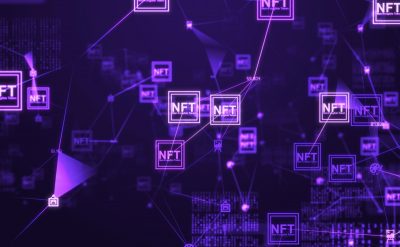Ten years back, Bitcoin had a value of less than a penny. After a decade, each Bitcoin is valued at about USD 20,000, and early investors are now driving Lamborghinis. So, not just the prices went up, the technology behind Bitcoin – Blockchain got an opportunity to taste the hype, or you can say the Blockchain technology witnessed popularity due to the successful adoption of Bitcoin.
It has several benefits as it keeps a transparent record of money or data transactions between two parties. More benefits of the technology are it is secure and immutable. The researchers and professionals dealing with this technology can look at the future wrapped in the hands of Blockchain. To understand that, begin understanding the term “Blockchain.”
What is blockchain?
According to the book Blockchain for Dummies by Tiana Laurence, “Blockchain is a shared, immutable ledger that facilitates the process of recording transactions and tracking assets in a business network. An asset can be tangible (a house, a car, cash land) or intangible (intellectual property, patents, copyrights, branding). Virtually anything of value can be tracked and traded on a blockchain network, reducing risk and cutting costs for all involved.”
Blockchain networks can be public or private. It is public wherein anyone can join. It is private where one organization governs the network, and participants need to take permission to join, and maintained by a consortium of organizations.
“Several business sectors, companies in healthcare, financial services, agriculture, as well as other entrepreneurs and solopreneurs are rushing to adopt the blockchain technology and secure their financial transactions to provide a clear record book among individuals with the digital coin’s technology, “cryptocurrency.” Meanwhile, many of these businesses are doing so basically because of the fear of being left behind (FOMO), without having crystal understanding about the basics of blockchain technology and how it should be applied to optimize their business performances.”
― Olawale Daniel
Looking at the speed, every time someone is creating a blockchain solution to drive innovation and disrupting traditional business models. It is occurring in every industry, and so, we are witnessing an evolution.
Let us view the changes Blockchain is about to bring in the future.
1. Emergence of pragmatic governance model
In 2020, new governance models will help in decision-making, permission schemes, and make payments more efficiently. These models will help in standardizing information from different sources and capture new and robust data sets. Most organization leaders expect to see practical and sensible models across blockchain networks in the next one to three years.
2. Interconnectivity will come one step closer to reality
The general conception is that interconnectivity is a time-consuming process, and it might take several years to reach the maximum level. Also, as more and more audiences are going toward a strong networking system, they will expect (if not demand) guidance on integrating different protocols.
Therefore, the future can see organizations receiving more governance and guidance on permissioned and permission-less blockchain networks.
3. Possibility of cross-border payments
The transfer of value has been slow and expensive, and mostly it is severe when the payments are to take place across international borders. The reason is when multiple currencies are involved, the transfer process puts forth such requests to numerous banks in various locations before the recipient accepts money. This is where blockchain potentially provides a faster and cheaper alternative to cross-border payment methods.
In other cases, the money remittance cost can be as high as 20% of the transfer amount, and Blockchain might just be a fraction of that. The transaction speed is more without any hurdles and security concerns.
4. Identity security and management
No matter how many measures and tactics are taken to protect individual information, there is a prevalent risk to the identity of an individual. Blockchain technology plays a tremendous role here by ensuring a considerable level of security. Blockchain conducts a verification process that takes place throughout member computers on a blockchain network.
Wondering how does it work? It is simple.
The verification is used for approving the transaction blocks before they get added to the chain. The security management and Blockchain are wide-ranging; they can be used to maintain voter information and proper functioning of the electoral process. Such technology is good for protecting ownership records and transferring user data across systems and platforms.
5. Supply chain simplifies tough processes
It is a popular fact that the supply chain is a way for many businesses and industries to function efficiently. Similarly, blockchain technologies are a way of keeping tabs on the supply chain and ensuring their efficiency. When this technology combines with the supply chain process, it eliminates human efforts and errors in the complex and crucial processes.
The logic is that Blockchain combines with every adjacent technology to make it work efficiently. Blockchain will keep the data secure and audit each step in the decision-making process. This approach will lead to sharper insights based on the information that people involved in the network trust.
6. Validation tools to eliminate discrepancies
Since Blockchain sets an example for the data protection mechanism, it will move further to strengthen the concept. Blockchain solutions will use validation tools along with crypto-anchors, oracles, and IoT beacons, which is similar to connecting digital assets into the physical world by injecting outside data into networks. Blockchain solutions, when combined with validation tools, will come forward to combat fraudulent data sources; there will be systems that will remove the dependency on human entry, which is more prone to error.
7. Adding innovation in payments via CBDC
Some countries are trying to experiment with Central Bank Digital Currencies (CBDC) for obvious reasons. Also, there is no doubt that it will gain momentum in the next few years while changing the way payments are done. This architecture will be enabled by Blockchain as a system of records and rely on central bank diligence in providing a robust governance framework for new assets.
The process of payment is often done with a tokenized asset. Blockchain technology will enable a wide range of tokenized assets. More recently, on Corda (the open-source blockchain platform for business), we are seeing the emergence of tokens, such as tokenized bond, equity, and a small piece of real estate – any of it can settle against CBDC.
Conclusively, Blockchain is a technology with a wide set of uses. It is also famous for its styles to blossom the cryptocurrency world, and several other applications have also been explored. Also, new ways of utilizing Blockchain emerge every day.
Whether you are involved in the world of digital currency or not, it is essential to develop a good understanding of it. While you research, you might discover ways for it to transform your business and investment world.
“According to Deloitte’s 2019 Global Blockchain Survey, 45 percent of emerging disruptors have already brought blockchain to production, while slightly less than one-quarter of enterprise respondents say they have.”
For more facts and figures on blockchain, do explore our latest whitepapers in the technology domain.













